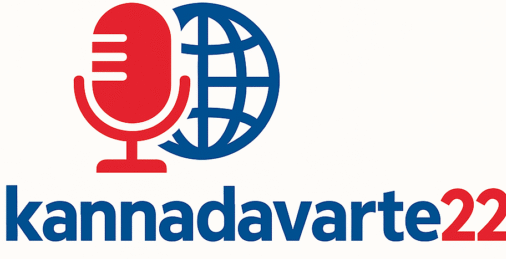samay Raina In the ever‑buzzing world of Indian comedy and social media, few moments have struck a chord quite like comedian Samay Raina ’s cheeky reply outside the Supreme Court going viral. Facing legal heat over alleged insensitive jokes on disabled people—especially targeting those with conditions like Spinal Muscular Atrophy (SMA) and blindness—Raina, along with four influencers, appeared in court on July 15, 2025. Amid the gravity, a candid quip snapped him back into the public’s heart—and unleashed a storm across digital media .

1. Unexpected Humor in a Serious Setting
His witty comment outside the Supreme Court added lightness to a tense legal moment—making it instantly shareable.
2. Relatable & Meme-Worthy Delivery
The tone, expression, and phrasing were perfect for memes, reels, and social media virality.
3. Smart Damage Control
Instead of being silent or defensive, Samay Raina used humor to soften public opinion while respecting legal boundaries.
4. Public Support & Influencer Solidarity
His subtle “I support Mohak Mangal” showed unity with fellow creators—earning audience empathy and solidarity.
5. Reinvention of Image Through Authenticity
The viral clip helped shift the narrative from backlash to comeback, proving he’s still the “people’s comic.”
From Courtroom Tension to Viral Gold
On July 15, 2025, Samay Raina and co. appeared before the Supreme Court in response to a PIL filed by the Cure SMA Foundation alleging mockery of disabled individuals. The case had created ripples—not just legal ones—but social uproar across the nation .
Yet, as camera flashes flashed and reporters clamored, Samay Raina kept his cool. One moment became legendary: faced with the media, he smiled, leaned in, and replied, “Wahin kahenge na, aapko thodhi kahenge”—meaning “I’ll tell what I have to, in court—not here”—and the clip exploded online. And when asked about YouTuber Mohak Mangal, Raina simply said: “I support Mohak Mangal.”
This blend of politeness, cheekiness, and prudence—underpinned by a playful solidarity line—was cut from classic Samay Raina cloth: able to lighten the moment without diminishing the seriousness. It was a masterclass in evasion-humor.
Also Read : Tesla India: Elon Musk’s EV Giant Set to Electrify the Indian Market in 2025
Why It’s Resonating So Deeply
a) Comic Tact in Tightly Wound Times
Indian public discourse is saturated with heated debates, outrage threads, cancel culture flares—and in such fog, Raina’s calm, cheeky restraint was a breath of fresh air. He didn’t mock the legal process; he chose humor to deflect attention—accountable yet unapologetic.
b) Celebrity Accountability vs Free Speech
Amid the controversy, Raina had already removed all episodes of his YouTube show India’s Got Latent, cooperating with authorities and apologizing to the National Commission for Women . So the viral reply was not defiance, but smart PR: acknowledging high stakes while humanizing himself.
c) Meme Worthy & Social Shareable
It wasn’t a press release—it was meme gold. The tone, phrasing, facial expressions—it was a peak “soundbite” moment tailor‑made for WhatsApp forwards, Twitter threads, Instagram reels. In the digital age, relatability equals virality.
The Context: India’s Got Latent & the Preceding Storm
To fully understand the viral power, we need the backstory.
India’s Got Latent, launched June 2024, was Samay Raina’s YouTube play combining stand‑up and talent show vibes. But on Feb 10, 2025, podcaster Ranveer Allahbadia sparked a viral firestorm on an episode, asking contestants a deeply inappropriate question—prompting FIRs and outrage .
Within days, Raina removed all episodes and pledged full cooperation. But the fallout didn’t stop—SC cases were filed in Assam and Maharashtra, and the Supreme Court took notice of potential “damage to dignity” .
Also Read : Apple iPhone 16 Price Revealed: Everything You Need to Know About Features & India Launch
He further ruffled feathers by saying if his content reached kids, “Parents have failed”—deflecting responsibility . Then came his carefully ambiguous comeback tour announcement in May—yet he sidestepped questions on reviving Latent .
Into this swirling spotlight comes July 15—charged but cheeky, tense but composed.
The Moment — Play-by-Play Breakdown
Video of Raina outside SC court, now trending, shows:
- A swarm of cameras, press mics pushing forward.
- Raina steps calmly, nods, and smiles.
- A reporter: “Kuch kehna hai?”
- Samay winks: “Wahin kahenge na…aapko thodhi kahenge.” Laughter ripple.
- Follow-up: “Mohak Mangal ke baare mein kya?”
- Leaning deliberately: “I support Mohak Mangal.”
He didn’t evade with silence—he deflected with style. It spoke volumes: respect for the process and a classic comedic signature. The clip passed 1M+ views on Twitter and reels within hours, with hashtags like #SamayWinking trending nationwide.
Public Reaction: Fans, Critics, Analysts
Fan Outpouring
On Reddit:
“Comedy has no boundaries… it’s processing dark parts of life.” – Artistic_Fig_3028
“Jokes on everything. Shouldn’t be banned.” – sanjay joshi
Memes flourished—as did celebration posts framing Raina as composed under fire.
Critic Backlash
Others argue his past actions disqualify him from praised self-awareness; one comment:
“Sick disgusting guy. Some things are not meant to be joked about.”
They see the moment as PR spin, not genuine humility.
Media Takes
News outlets praised his calm demeanor—even while covering the “serious allegations” . Analytical articles debated whether comedians should face stricter regulations.
Cultural & Ethical Deep Dive
Humor’s Responsibility
Comedy straddles a tricky ethical line. In multicultural societies, a slight miscue can spark protests or legal risk. Samay’s court appearance exemplifies the delicate balancing act: repentance, accountability, and retaining talent identity.
Celebrity Redemption Arc
Celebrities under scrutiny often go through three stages: damage, apology, and rebranding. Samay elegantly hit stage three with “So sorry, and now, watch the comeback.” The SC moment? Gold standard of stagelighting redemption.
Free Speech vs Hate Speech
His case fuels ongoing debate: when does edgy humor become hate speech? Here, the Supreme Court’s caution about dignity and respect sends a signal: comedic freedom doesn’t override societal boundaries .
Comparisons & Historical Echoes
This isn’t the first time an artist flip‑flops between outrage and comeback:
- Kumar Vishwas: political satire leading to sedition trial, followed by reinvention via motivational speaking.
- Jon Stewart: US political comedy through scandals; managed respect while staying satirical.
- Ali G: tanked after offensive interviews but later authored remorseful memoirs and documentaries.
Samay is charting a similar course: humor amidst backlash, apology, then triumphant comeback with a wink.
Aftermath & What’s Ahead
- Legal: The SC has asked for a formal written response within two weeks. That will broadly determine further hearings .
- Career: His international tour might commence June, and his next public media move looks strategic.
- Digital Presence: He still hasn’t confirmed reviving India’s Got Latent. That suspense engages his audience.
- Public Perception: He’s walking a thin line between comeback hero and sensitive content trigger.
Lessons from the Moment
- Composure wins hearts. A calm, witty response can reshape public perception faster than heated press statements.
- Rectify, don’t excuse. Removing content and showing remorse builds credibility.
- Timing matters. Right moment, right tone—a cheeky reply at the SC, not on social media—made all the difference.
- Audience knows nuance. Digital audiences crave authenticity—even in controversy; they reward smart rebound, not arrogance.
Final Curtain: What This Viral Quip Means
In crisis, many shrink—some polarize. Samay Raina chose softness with steel. From courtroom tension to social media spotlight, his flippant quip became a masterclass in managing image. He neither snubbed victims nor surrendered humor—he found middle ground: the playful apology.
Whether this translates into long‑term goodwill or dissipates as “another media moment” remains to be seen. What’s undeniable: in today’s digital age, a few well‑timed words, delivered with confidence and warmth, can reboot a reputation. And that, perhaps, is the new frontier of celebrity resilience
